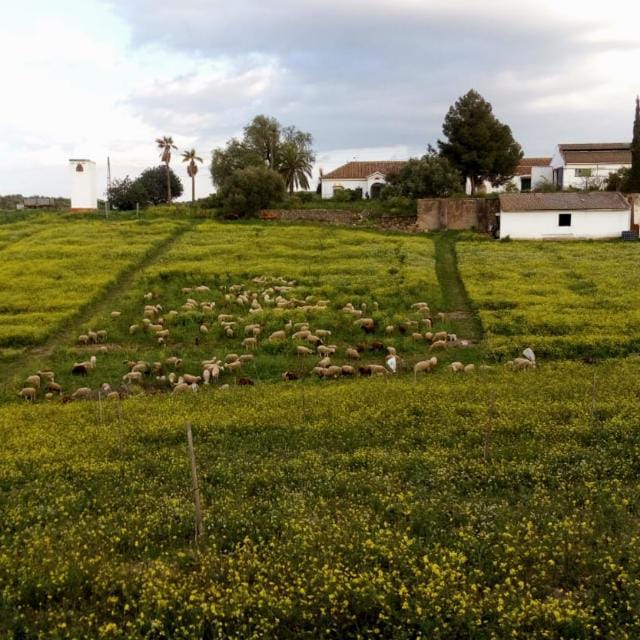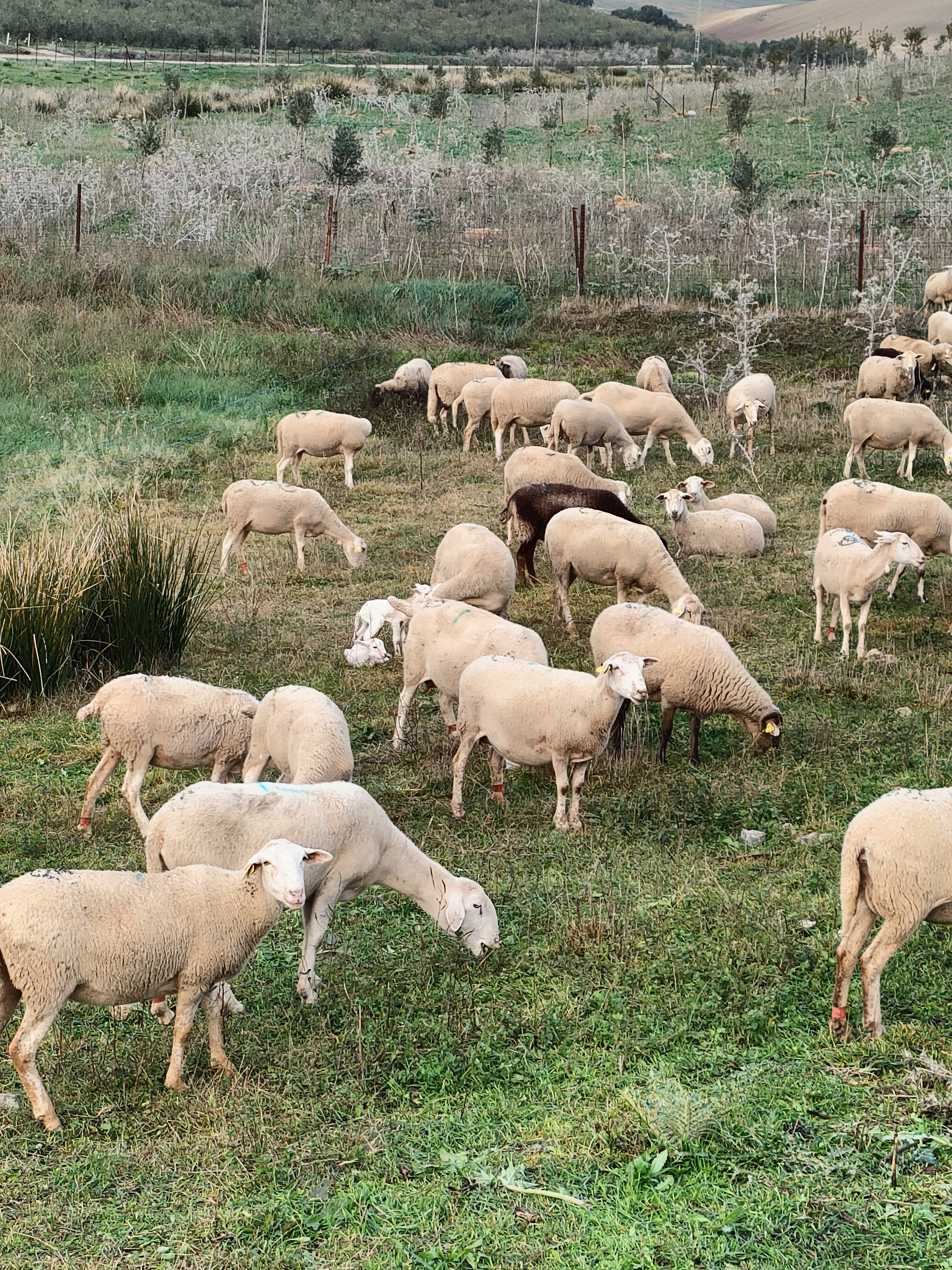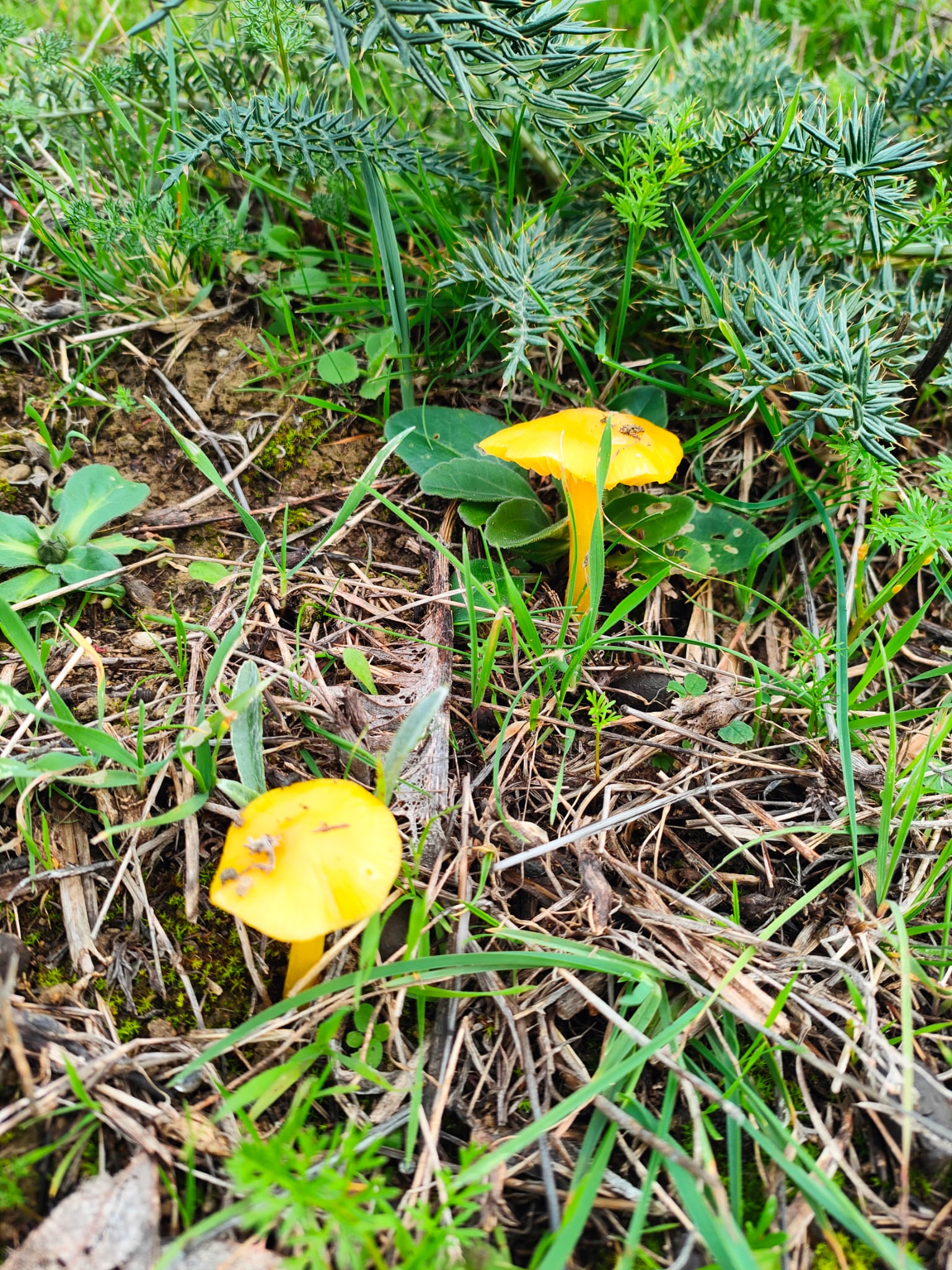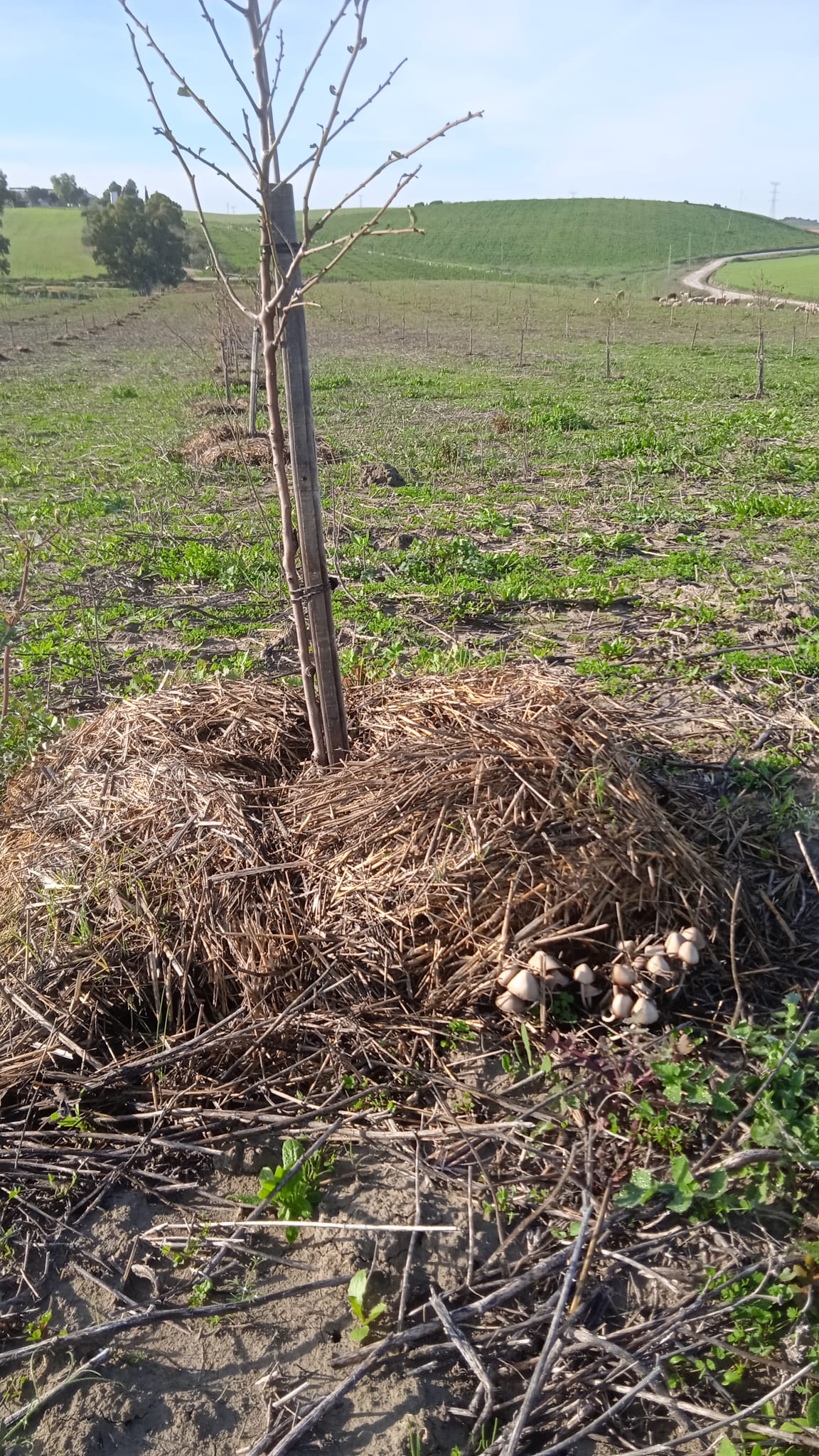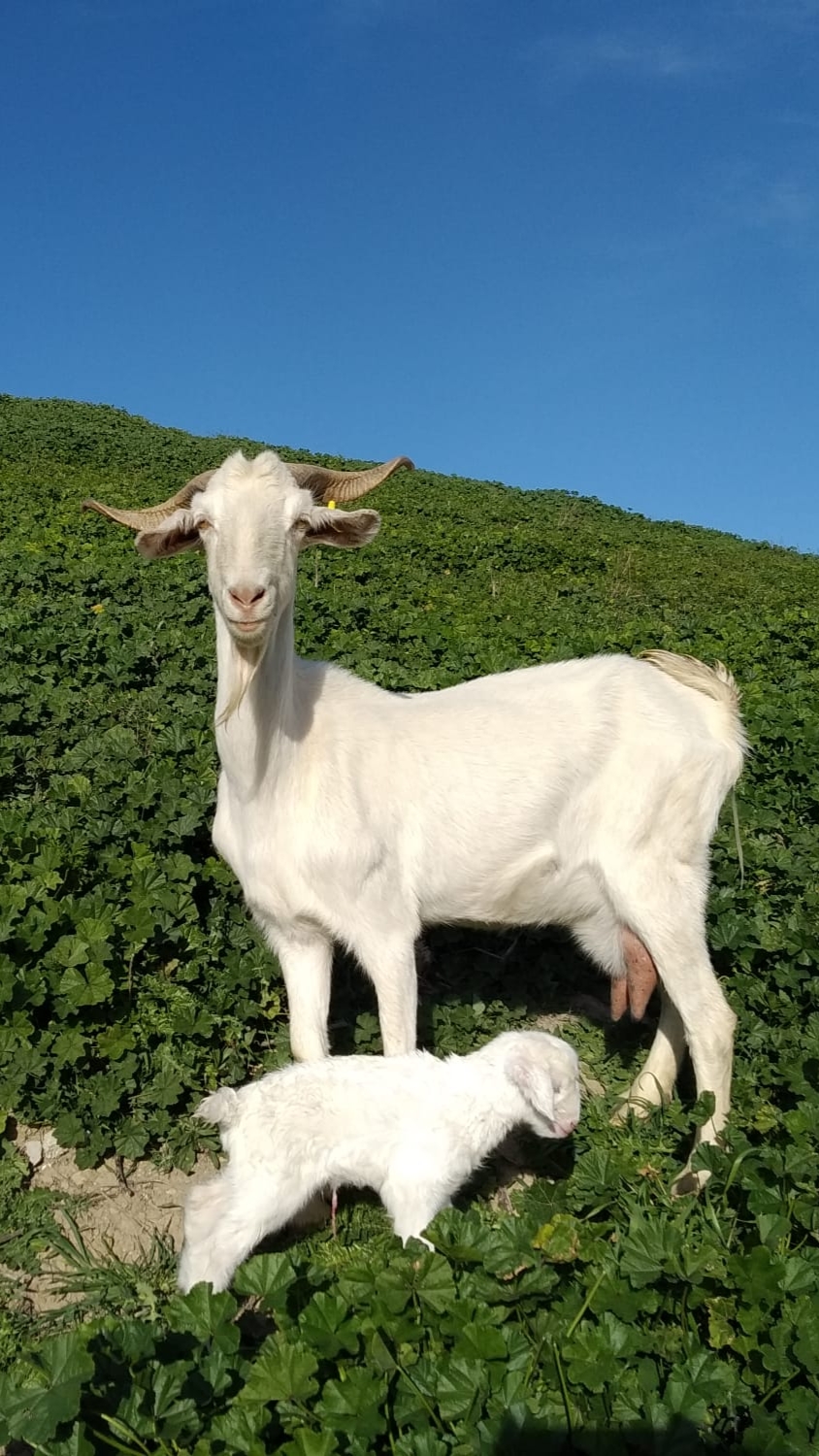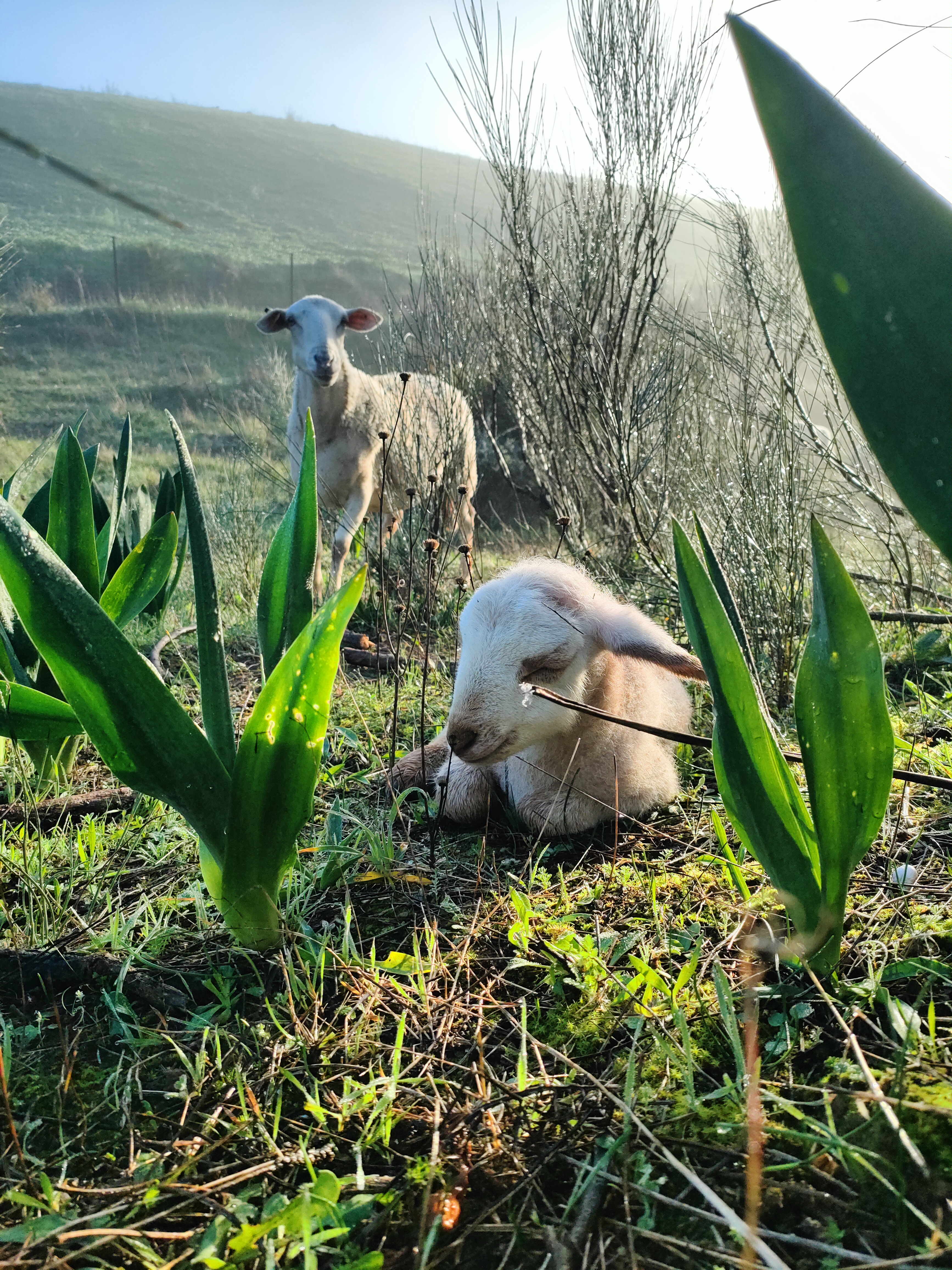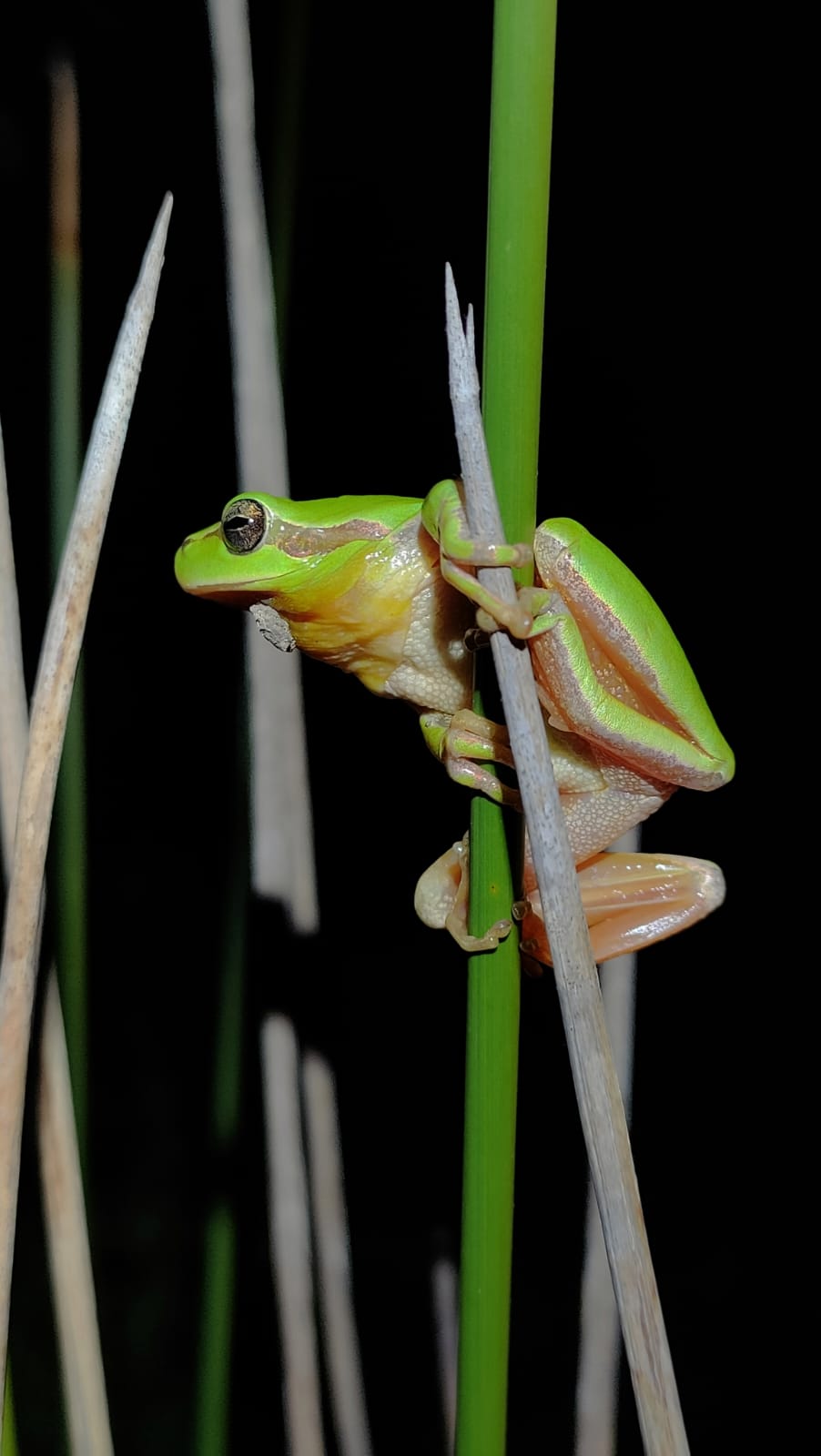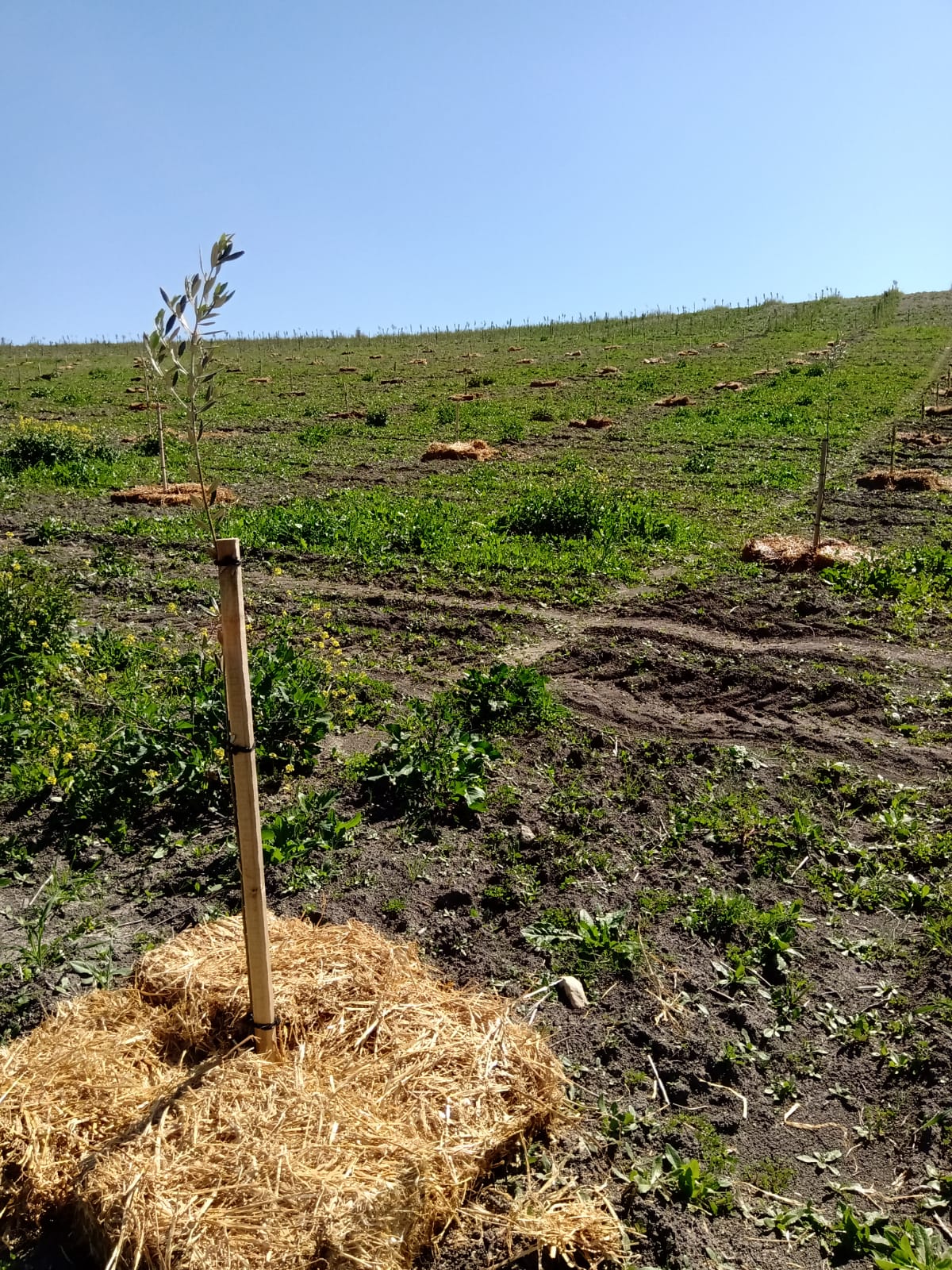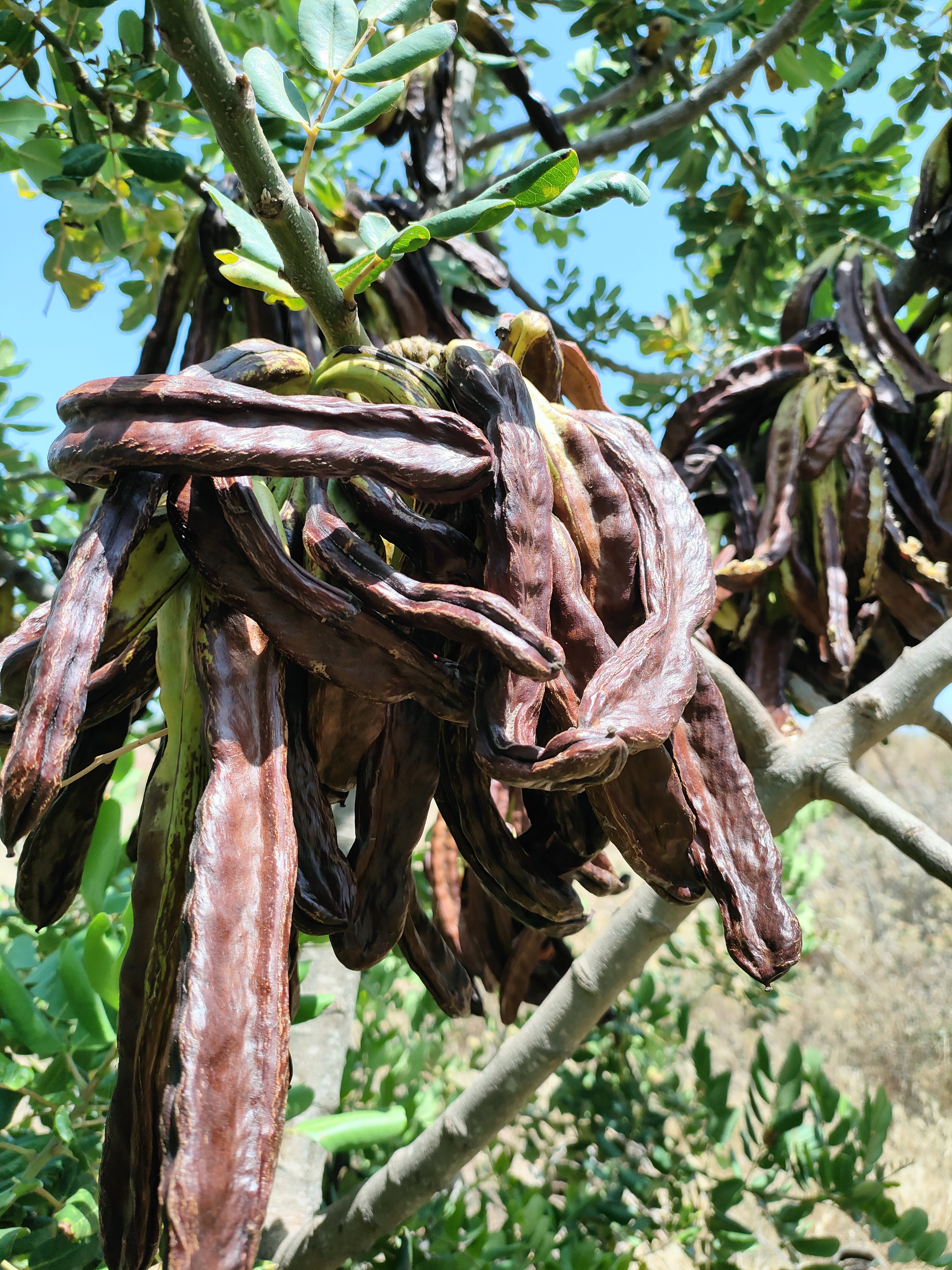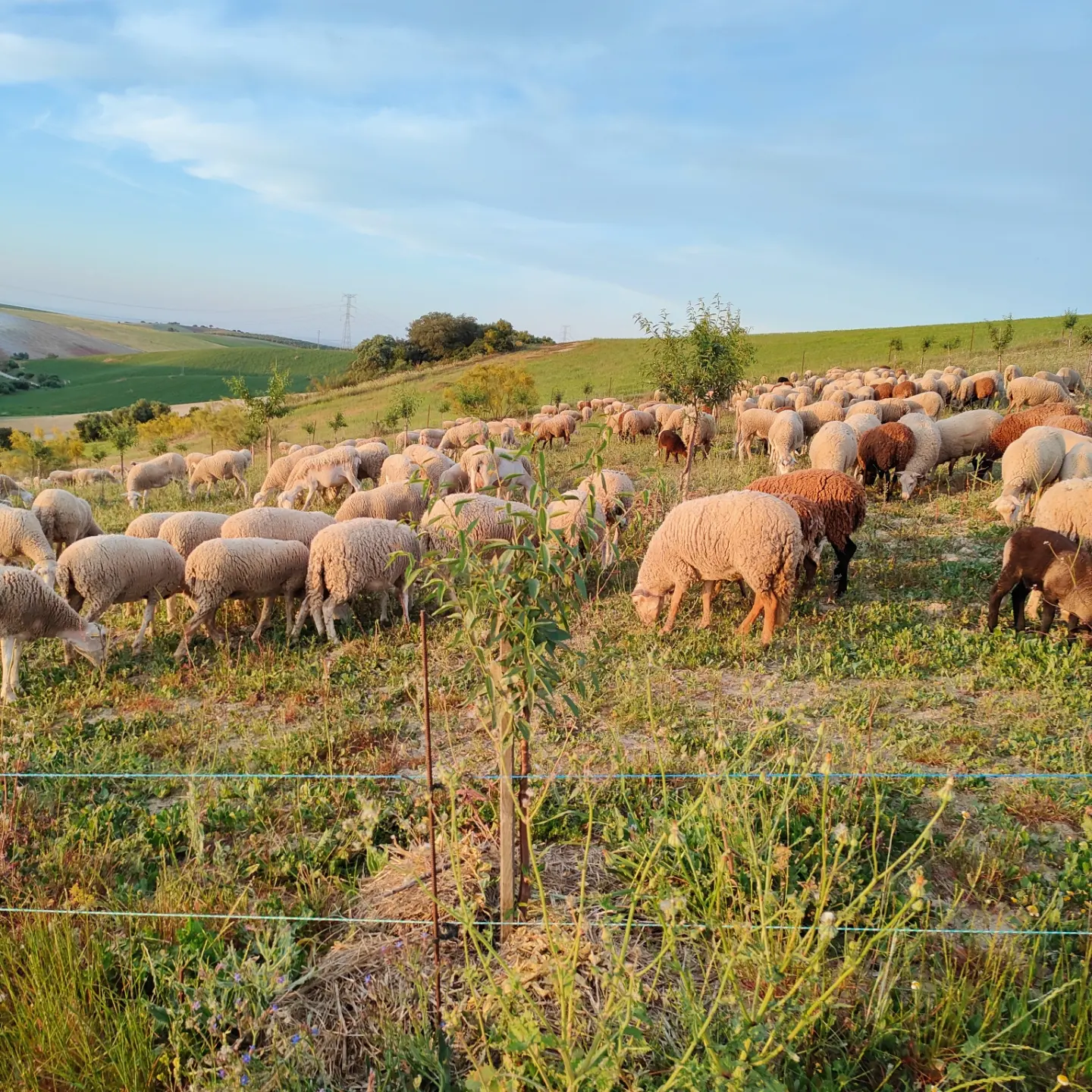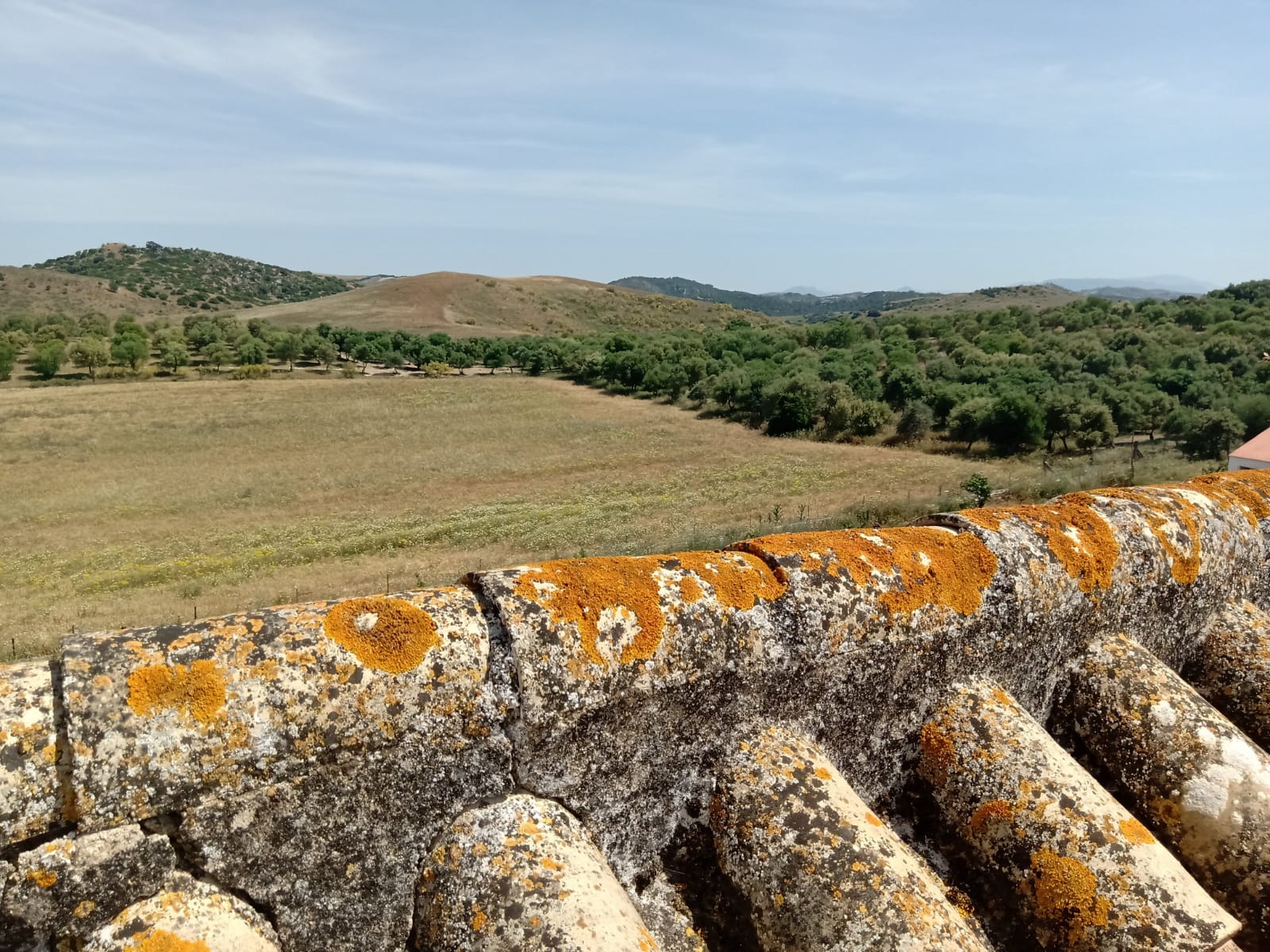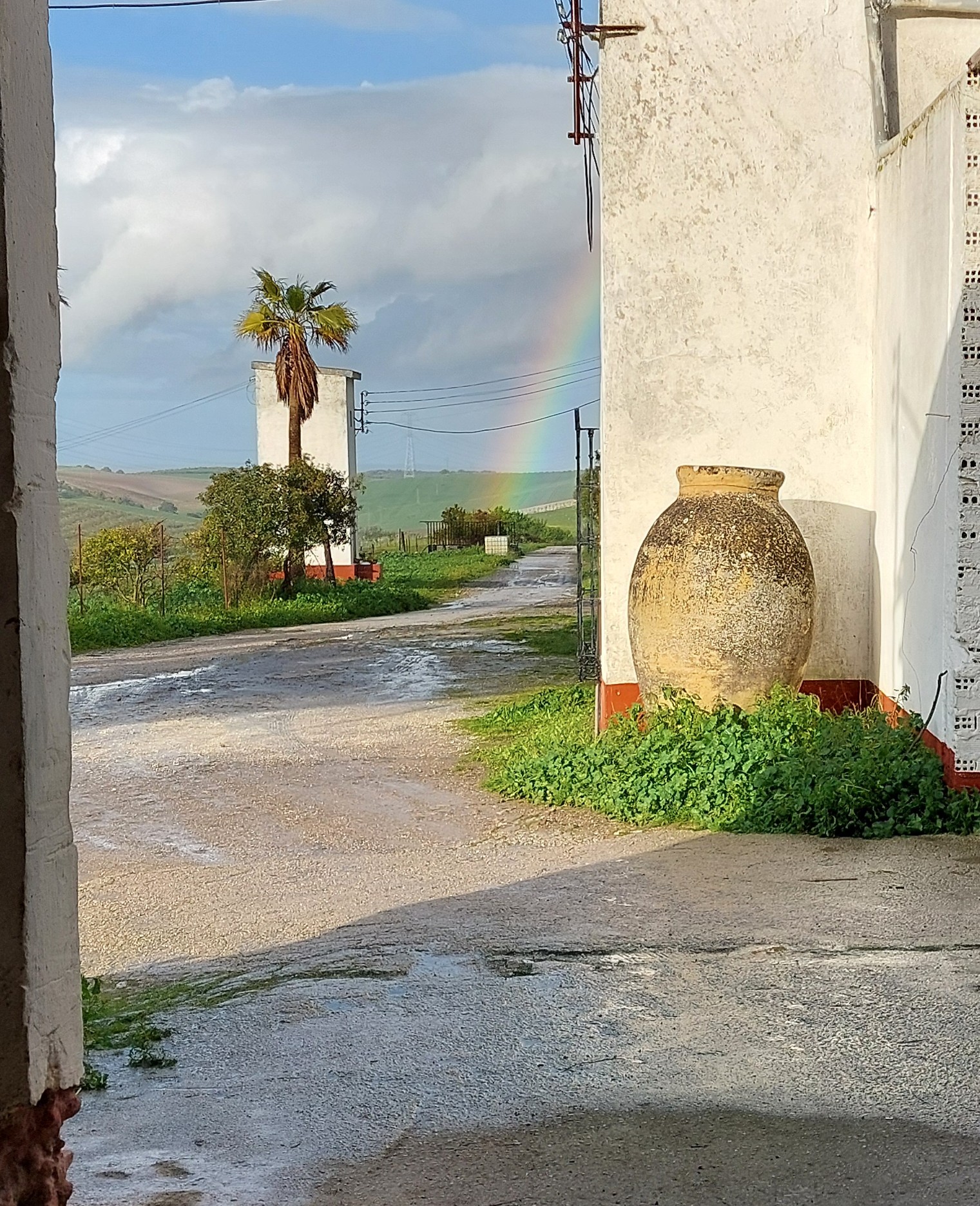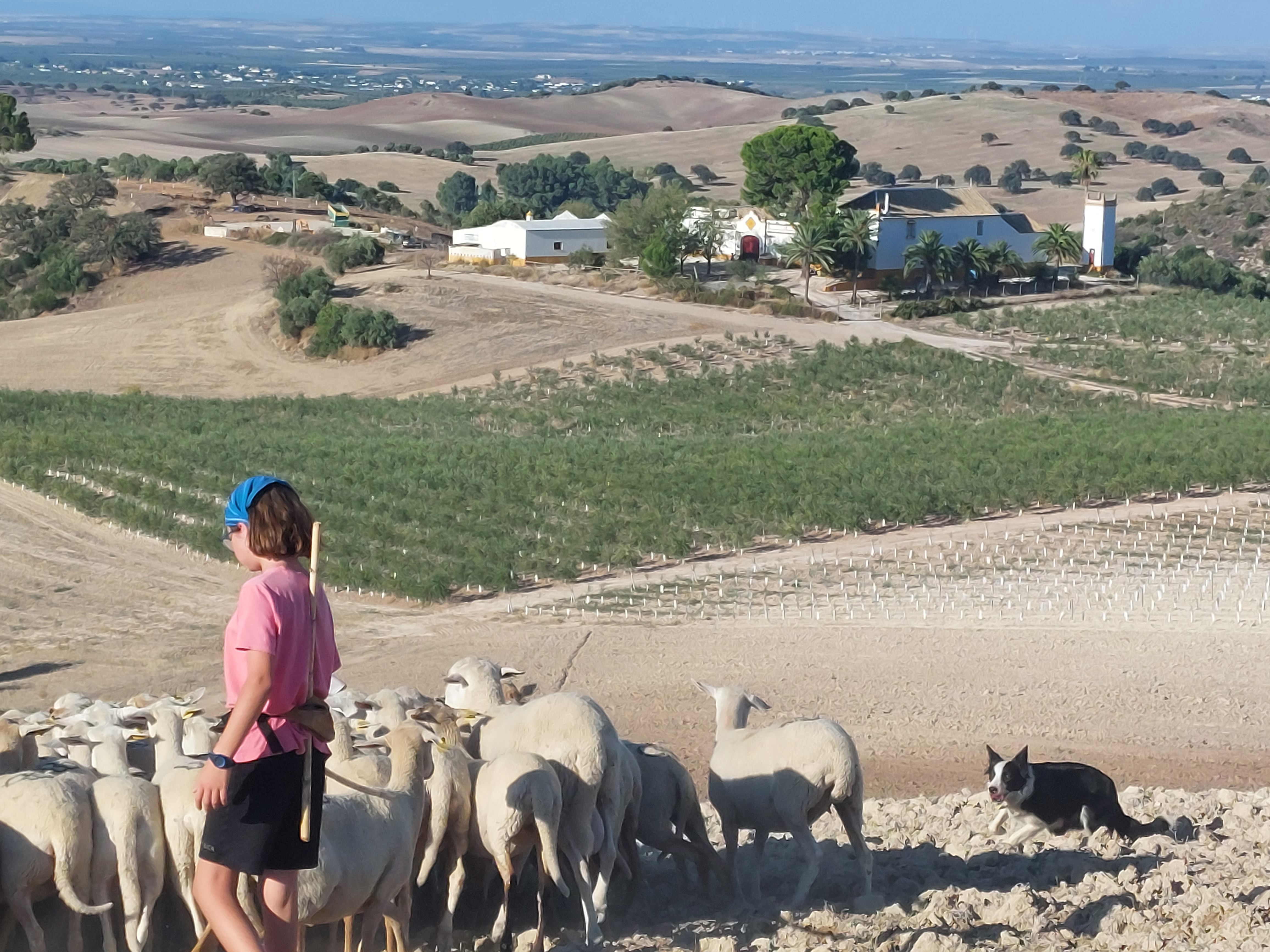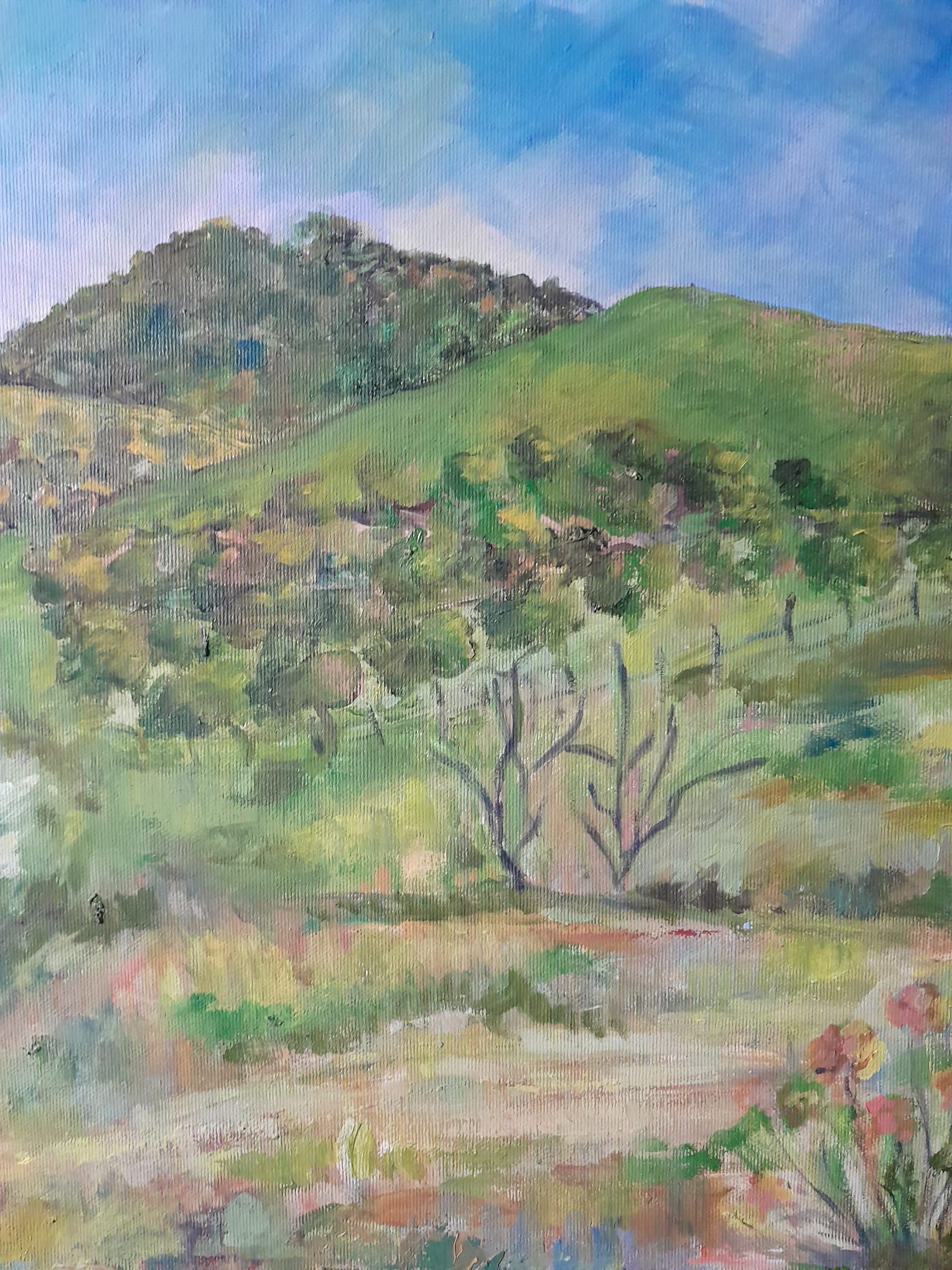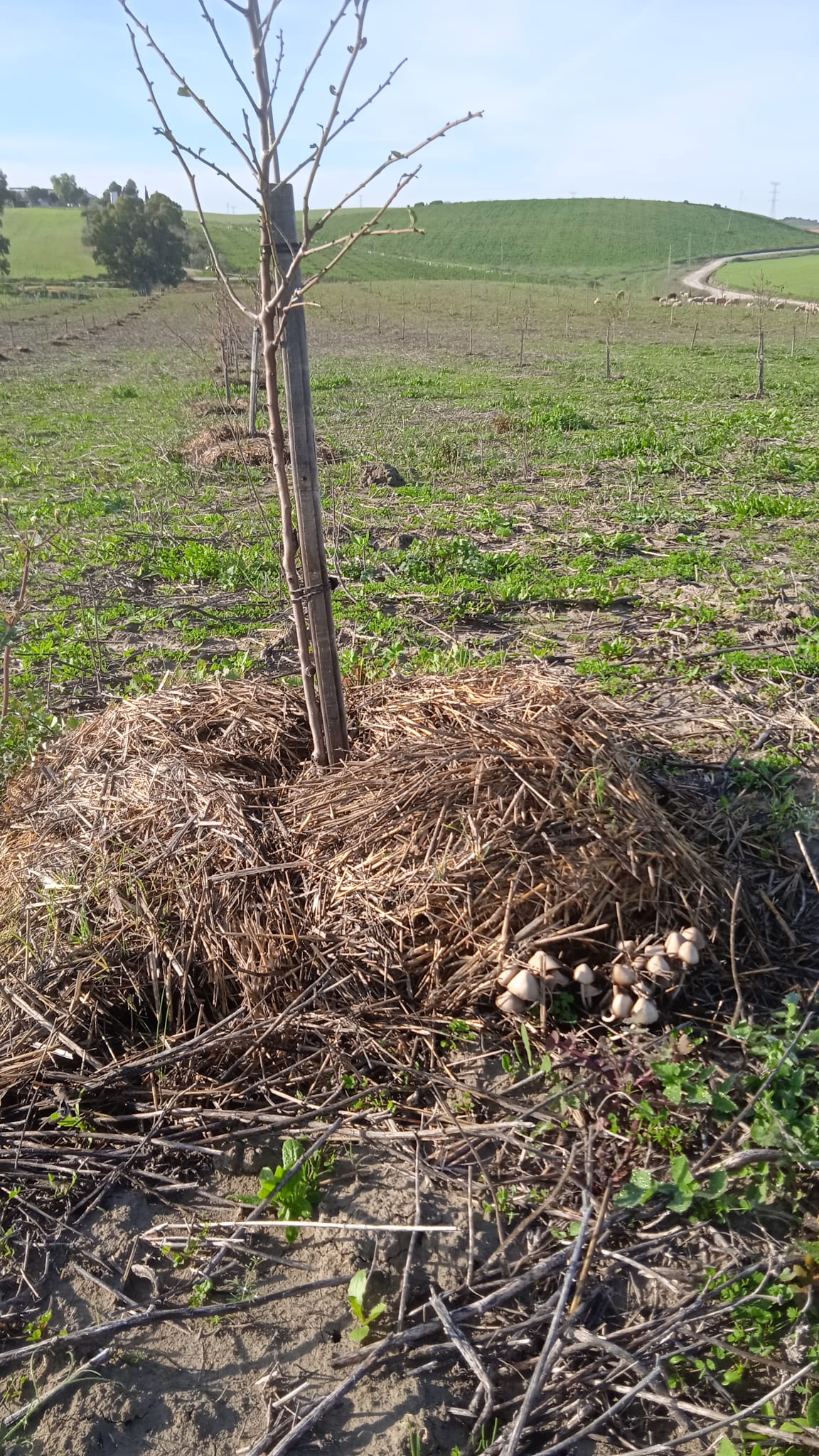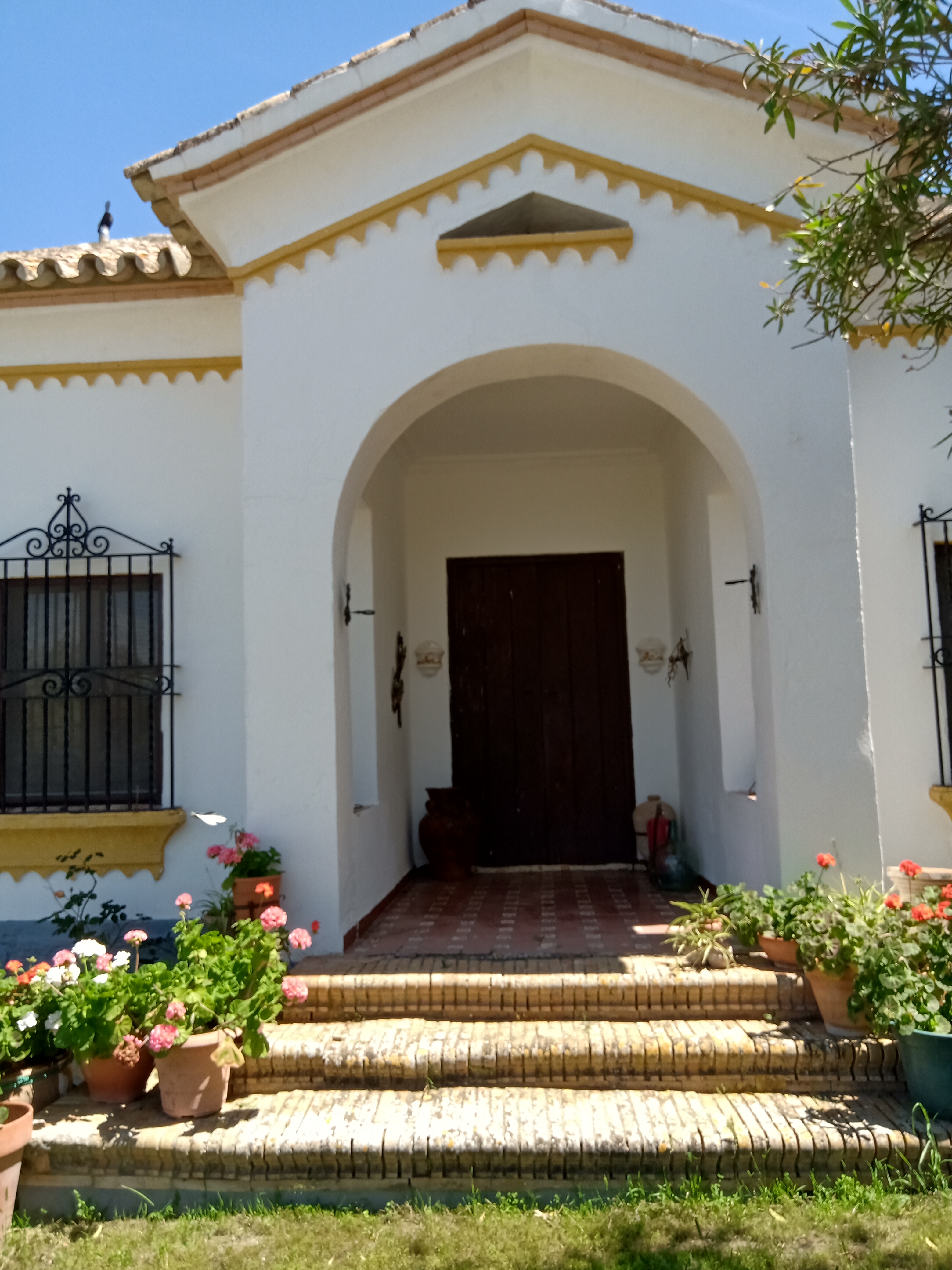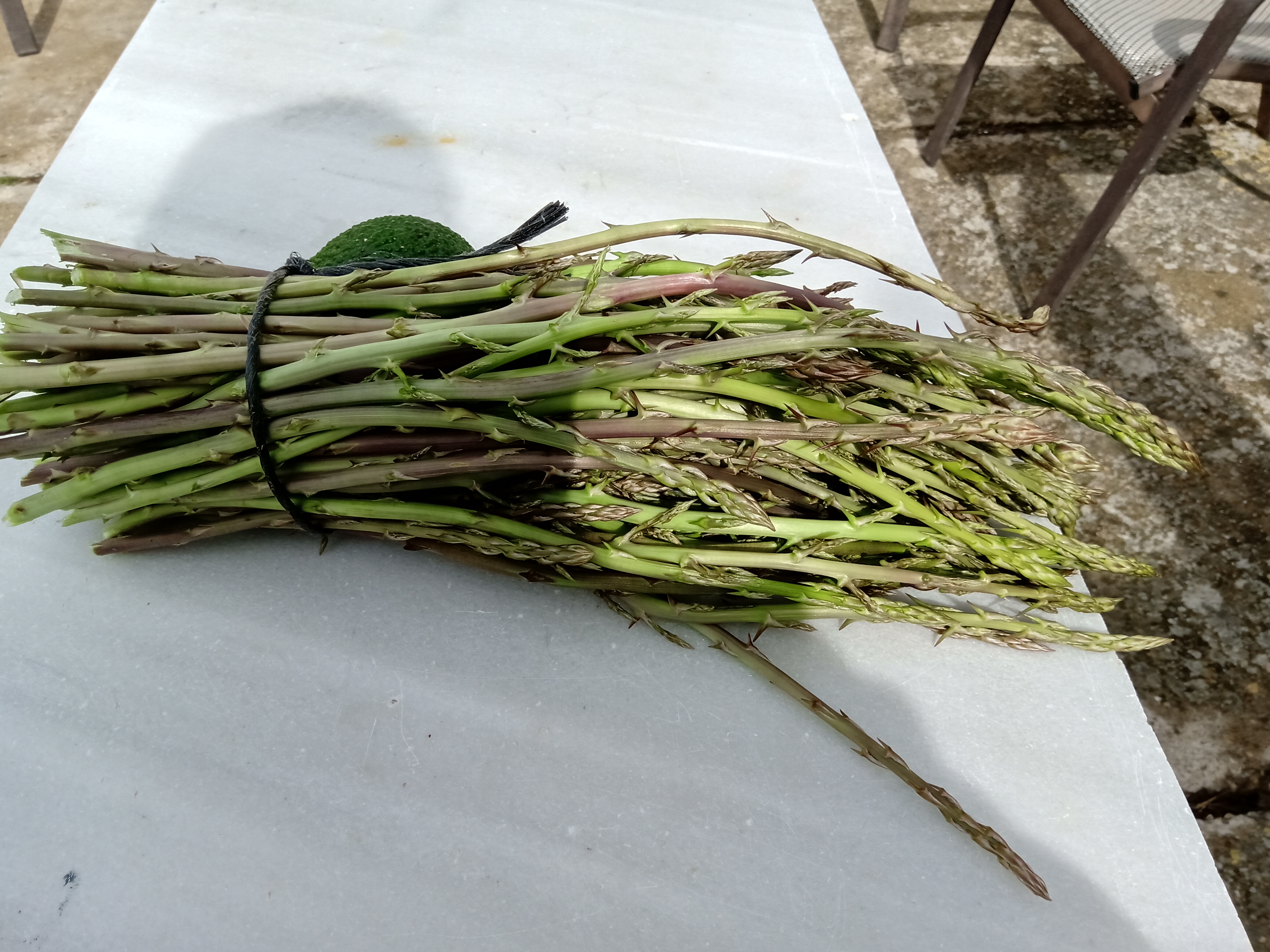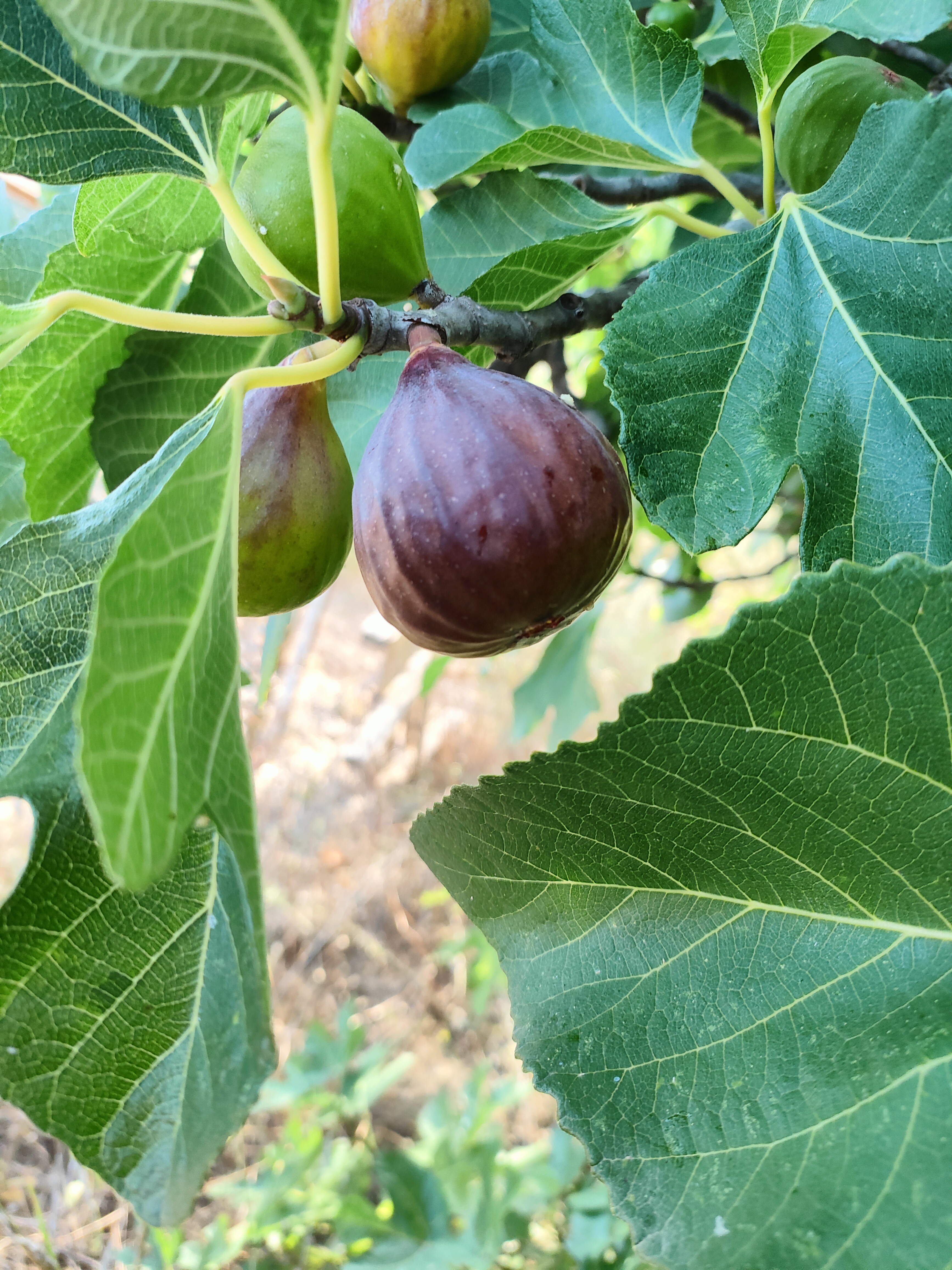Reconnecting with nature
Restoring nature through agriculture
"Naturales del Sierro, a cooperative to regenerate the land and ecosystems, in alliance with Nature.
“Naturales del Sierro” is an Cooperative of Community Land Exploitation, whose social purpose is the restoration of nature through regenerative management that takes advantage of all the synergies generated between agriculture, forestry and livestock, which increases biodiversity, attracts pollinators, reduces erosion, captures carbon, improves watersheds and provides multiple ecosystem services. It is a holistic model, which respects natural cycles and Andalusian agricultural cultural heritage.
Spain
Regional
ANDALUCIA
Mainly rural
It refers to a physical transformation of the built environment (hard investment)
Yes
2024-12-31
No
No
No
As a representative of an organisation
The uniqueness of our project lies in the implementation of an agricultural and forestry farm capable of combining benefits for the ecosystem through a model of optimized integration of livestock and forest plantations that minimizes soil disturbance, with crop diversification, eliminating synthetic fertilizers and reducing fossil fuels, through the use of a type of grazing called regenerative or holistic grazing.
We try to achieve an economically profitable farm that produces healthy, quality food while regenerating the land and creating jobs that provide quality of life for workers, who feel an essential part of a process that contributes to and benefits the ecosystem and not the other way around. That is why in our Cooperative all workers are partners.
Target audiences
Our project wants to be an example for conventional farmers and ranchers to realize that it is profitable to be an ally of nature and for all people who want to consume healthy food produced in harmony with ecosystems.
In addition, we are open to schoolchildren, university students and anyone interested in checking the advantages of regenerative agriculture “in situ”.
Specific objectives
-Increase biodiversity, recover pollinators, combat erosion, control fires, retain carbon and save water.
-Produce quality food, with respect for animals and their well-being.
-Achieve generational change, link a stable population to the rural territory, create decent employment and raise awareness about the advantages of regenerative agriculture.
-Conserve Andalusian cultural heritage, material and immaterial, in the rural world.
Results
Our Cooperative is responsible for the use of about 300 hectares, about 1,000 sheep and goats and is the livelihood of about 30 families.
As we have accredited with the corresponding certifications, we have achieved beneficial results for the persons, land and ecosystems, such as Ecological Certification, Agricultural Priority, Andalusia Social Economía Award 2024
We try to achieve an economically profitable farm that produces healthy, quality food while regenerating the land and creating jobs that provide quality of life for workers, who feel an essential part of a process that contributes to and benefits the ecosystem and not the other way around. That is why in our Cooperative all workers are partners.
Target audiences
Our project wants to be an example for conventional farmers and ranchers to realize that it is profitable to be an ally of nature and for all people who want to consume healthy food produced in harmony with ecosystems.
In addition, we are open to schoolchildren, university students and anyone interested in checking the advantages of regenerative agriculture “in situ”.
Specific objectives
-Increase biodiversity, recover pollinators, combat erosion, control fires, retain carbon and save water.
-Produce quality food, with respect for animals and their well-being.
-Achieve generational change, link a stable population to the rural territory, create decent employment and raise awareness about the advantages of regenerative agriculture.
-Conserve Andalusian cultural heritage, material and immaterial, in the rural world.
Results
Our Cooperative is responsible for the use of about 300 hectares, about 1,000 sheep and goats and is the livelihood of about 30 families.
As we have accredited with the corresponding certifications, we have achieved beneficial results for the persons, land and ecosystems, such as Ecological Certification, Agricultural Priority, Andalusia Social Economía Award 2024
Regenerative agriculture and holistic grazing
Biodiversity enhancement
Carbon sequestration and water savings
Protection of rural landscape and agricultural heritage
Generational renewal and population fixation in the rural world
In times of drought, such as the one we are systematically experiencing in Andalusia, it can be proven that the most efficient and sustainable way to retain water in the soil is to leave the vegetation cover on the land and let the roots of the soil themselves act as natural carbon sinks. For this reason, we have reforested all the land of our Cooperative with native and diverse trees (wild olive, almond, pistachio, carob and olive trees), we have abandoned tilling or turning over the land and the control of adventitious weeds is carried out with rational livestock management. This holistic or regenerative grazing system helps to reverse the effects of climate change by capturing carbon in the soils and in the biomass above them. Native species, some of which are endangered, such as the Andalusian white goat or the lojeña sheep, are used for holistic grazing.
Biodiversity has improved exponentially, as the soil is now a reservoir for pollinators (bees, butterflies, beetles and other insects), reptiles, amphibians, mammals and birds that had disappeared in recent decades due to the use of artificial fertilizers and monocultures.
Water savings and erosion control have occurred from the first year, the vegetation cover acts as a sponge that allows rainwater to reach subway aquifers, and controls runoff from torrential rains.The system described makes it possible to take advantage of all the synergies generated by the joint management of the
forestry, agriculture and livestock, achieving the most circular and autonomous nutrient management
possible in a highly diversified production system, without the use of external inputs and where
everything is used.
On the other hand, livestock management through holistic grazing is at the service of prevention of the risk of fire in the most dangerous areas and times. Aldo Leopold the great ecologist and American forester wrote that “a match, a goat and an ax are enough for the conservation of temperate forests"
Biodiversity has improved exponentially, as the soil is now a reservoir for pollinators (bees, butterflies, beetles and other insects), reptiles, amphibians, mammals and birds that had disappeared in recent decades due to the use of artificial fertilizers and monocultures.
Water savings and erosion control have occurred from the first year, the vegetation cover acts as a sponge that allows rainwater to reach subway aquifers, and controls runoff from torrential rains.The system described makes it possible to take advantage of all the synergies generated by the joint management of the
forestry, agriculture and livestock, achieving the most circular and autonomous nutrient management
possible in a highly diversified production system, without the use of external inputs and where
everything is used.
On the other hand, livestock management through holistic grazing is at the service of prevention of the risk of fire in the most dangerous areas and times. Aldo Leopold the great ecologist and American forester wrote that “a match, a goat and an ax are enough for the conservation of temperate forests"
"Naturales del Sierro" has among its corporate purpose, described in the statutes, the conservation of agricultural heritage, in accordance with the principles of the “Baeza Charter of Agricultural Heritage”, 2013, approved under the auspices of UNESCO.
This Charter seeks to dignify the heritage linked to the agrarian world, encompassing traditional knowledge, furniture, real estate and intangible heritage.
Our project has recovered many rural heritage practices in danger of disappearing, such as the use of handmade lime for whitewashing and repairing Andalusian farmhouses; the recovery of Arabic tiles on roofs, wooden beams, the use of traditional farming and grazing tools, such as cowbells or preservation of cobblestones in the courtyards.
Our farm is not a museum, where lost practices are recreated, but a living space where all the elements that identify a traditional agrarian system persist: real estate (farmhouse, ranches, forest and livestock plots, fences and agricultural roads, livestock trails ...), furniture (farm implements, agricultural machinery, public and private documents relating to contracts and transactions relating to the agricultural world ... ), animals (sheep, goats, donkeys, dogs, turkeys, chickens, wild animals) and above all, as a binder, the specific and intangible knowledge, treasured by several generations of farmers and stockbreeders who continue to practice and provide functionality to all the elements listed. “Naturales del Sierro” is the result of an aggregate of tangible and intangible goods, activities, of an agricultural nature with aesthetic and patrimonial value. Proof of the existence of historical values in the farm, is that the main farmhouse of the Cooperative, called “Pozo del Rosal” has merited its inclusion in the book “Cortijos, Haciendas y Lagares. Architectures of large farms in Andalusia”.
Agricultural heritage is universal, so the techniques for preserving this living heritage are easily replicable elsewhere.
This Charter seeks to dignify the heritage linked to the agrarian world, encompassing traditional knowledge, furniture, real estate and intangible heritage.
Our project has recovered many rural heritage practices in danger of disappearing, such as the use of handmade lime for whitewashing and repairing Andalusian farmhouses; the recovery of Arabic tiles on roofs, wooden beams, the use of traditional farming and grazing tools, such as cowbells or preservation of cobblestones in the courtyards.
Our farm is not a museum, where lost practices are recreated, but a living space where all the elements that identify a traditional agrarian system persist: real estate (farmhouse, ranches, forest and livestock plots, fences and agricultural roads, livestock trails ...), furniture (farm implements, agricultural machinery, public and private documents relating to contracts and transactions relating to the agricultural world ... ), animals (sheep, goats, donkeys, dogs, turkeys, chickens, wild animals) and above all, as a binder, the specific and intangible knowledge, treasured by several generations of farmers and stockbreeders who continue to practice and provide functionality to all the elements listed. “Naturales del Sierro” is the result of an aggregate of tangible and intangible goods, activities, of an agricultural nature with aesthetic and patrimonial value. Proof of the existence of historical values in the farm, is that the main farmhouse of the Cooperative, called “Pozo del Rosal” has merited its inclusion in the book “Cortijos, Haciendas y Lagares. Architectures of large farms in Andalusia”.
Agricultural heritage is universal, so the techniques for preserving this living heritage are easily replicable elsewhere.
“Naturales del Sierro” advocates a cooperative system, deeply democratic, so that, regardless of the importance of the assets that are transferred to the cooperative, all members have the same decision-making capacity. Decisions are made by consensus, the fundamental thing is that all members respect the regeneration of the land and the restoration of nature.
However, the Cooperative prefers to hire people from the most needy groups, in order to achieve their social roots.
On the other hand, the presence of women in our Cooperative has been essential, in fact four of the five members of the founding Governing Council of the Cooperative are women.
The depopulation of the rural world is a recurrent problem in Europe. Our Cooperative has achieved the generational replacement, and the fixation of population in the rural world, being a model perfectly transferable to other environments.
“Naturales del Sierro” has a clear vocation of food self-sufficiency, for people and animals, compatible with the sale of our products to supply other organic cooperatives in the area and occasional sales in organic markets.The cooperative activity for self-consumption and food sovereignty is also easily replicable in other contexts.
Special attention is paid to livestock farming, which has been given the criteria of exigency. This explains the special affiliation of the sheep and goats, belonging to breeds registered in the corresponding Genealogical Books of native breeds in danger of extinction. The main breeding methods used on the farm respond to an eminent ecological inspiration: low stocking density, use of pastures and stubble, late weaning, exclusive commercialization of organic suckling lambs with absolute renunciation of fattening of offspring and minimal use of animal health products, respecting the mandatory disease control program.The absence of chemical fertilizers and weed control and fertilization by holistic grazing is also management perfectly transferable.
However, the Cooperative prefers to hire people from the most needy groups, in order to achieve their social roots.
On the other hand, the presence of women in our Cooperative has been essential, in fact four of the five members of the founding Governing Council of the Cooperative are women.
The depopulation of the rural world is a recurrent problem in Europe. Our Cooperative has achieved the generational replacement, and the fixation of population in the rural world, being a model perfectly transferable to other environments.
“Naturales del Sierro” has a clear vocation of food self-sufficiency, for people and animals, compatible with the sale of our products to supply other organic cooperatives in the area and occasional sales in organic markets.The cooperative activity for self-consumption and food sovereignty is also easily replicable in other contexts.
Special attention is paid to livestock farming, which has been given the criteria of exigency. This explains the special affiliation of the sheep and goats, belonging to breeds registered in the corresponding Genealogical Books of native breeds in danger of extinction. The main breeding methods used on the farm respond to an eminent ecological inspiration: low stocking density, use of pastures and stubble, late weaning, exclusive commercialization of organic suckling lambs with absolute renunciation of fattening of offspring and minimal use of animal health products, respecting the mandatory disease control program.The absence of chemical fertilizers and weed control and fertilization by holistic grazing is also management perfectly transferable.
Today, people with different backgrounds, occupations and nationalities are linked to the Cooperative "Naturales del Sierro".
In the first place, the members themselves and their families are directly involved in the management of the cooperative. Decisions are made on a consensual basis, since the legal form of a Community Land Use Cooperative means that all members have the same decision-making capacity. Whether they are transferor members (who contribute, for an indefinite period of time, their land, livestock or agricultural machinery) or worker members (who contribute, also for an indefinite period of time, their work and knowledge).
Must be added the incentive that in an increasingly globalized agrarian framework, a constant cultural exchange within the framework of the WWOOF program, a non-profit association that serves volunteers and farms or rural dwellers who work with ecological and sustainable methods, and more than 200 people of all nationalities have passed through our farm during the last few years. The woofers, who contact El Sierro Cooperative through one of our members, Anne Rugemer, can experience for as long as they wish how is the practice of regenerative agriculture and livestock, cooperating in the work and sharing the coexistence with the members of the Cooperative. The experience has been especially positive, to the point that several of these woofers have become members of the Cooperative, hired for an indefinite period of time.
On the other hand, our Cooperative only sells its products, ecological and regenerative (oil, sheep, almonds...) to other agricultural cooperatives in the region, mainly “Cooperativa Los Remedios”, from the nearby town of Olvera, or to individuals in the area, so that the final consumers are close people who share our vision of agriculture and livestock restoring and respectful with nature.
Finally, the accounting and financial matters of the cooperative have been entrusted to another cooperative from Seville.
In the first place, the members themselves and their families are directly involved in the management of the cooperative. Decisions are made on a consensual basis, since the legal form of a Community Land Use Cooperative means that all members have the same decision-making capacity. Whether they are transferor members (who contribute, for an indefinite period of time, their land, livestock or agricultural machinery) or worker members (who contribute, also for an indefinite period of time, their work and knowledge).
Must be added the incentive that in an increasingly globalized agrarian framework, a constant cultural exchange within the framework of the WWOOF program, a non-profit association that serves volunteers and farms or rural dwellers who work with ecological and sustainable methods, and more than 200 people of all nationalities have passed through our farm during the last few years. The woofers, who contact El Sierro Cooperative through one of our members, Anne Rugemer, can experience for as long as they wish how is the practice of regenerative agriculture and livestock, cooperating in the work and sharing the coexistence with the members of the Cooperative. The experience has been especially positive, to the point that several of these woofers have become members of the Cooperative, hired for an indefinite period of time.
On the other hand, our Cooperative only sells its products, ecological and regenerative (oil, sheep, almonds...) to other agricultural cooperatives in the region, mainly “Cooperativa Los Remedios”, from the nearby town of Olvera, or to individuals in the area, so that the final consumers are close people who share our vision of agriculture and livestock restoring and respectful with nature.
Finally, the accounting and financial matters of the cooperative have been entrusted to another cooperative from Seville.
The participation of the andalusian regional administration, in the configuration and development of our project has been fundamental. Since
-It has administratively registered the cooperative, prior approval of its social Statutes.
- It has granted the qualification of Priority Agricultural Exploitation to the Cooperative.
-the Andalusian Center of Ecological Agriculture, it has certified the ecological character of all our products.
-Finally, the Junta de Andalucía has granted an important recognition of the value of our Cooperative, by awarding the Social Economy Award 2024 to “Naturales del Siero”, as the best project.
The participation of the City Council of Morón de la Frontera, whose municipality our farm is located, has also been important, it has granted a tax benefit, in the sense that the land ceded to the Cooperative has a rebate in the local property tax.
The National Administration, by declaring the Cooperative of Community Exploitation of the Land has granted tax benefits on the Corporation Tax.
We would like to expressly mention the support given by the Andalusian public Universities,
-University of Seville, which has organized conferences for the dissemination of the regenerative project
-University of Pablo de Olavide, also in Seville, which is carrying out a research project to verify the increase of biodiversity in our lands .
- University of Granada, through the publication in the cultural magazine “erph” of our project,
-University of Jaén, which has accepted our proposal to participate in the next Congress on the Value of Water.
- International University of Andalusia, for allowing us to participate in the “Baeza Charter of Agricultural Heritage”.
Likewise, University of Evora and University of Coimbra, in Portugal and the Rural-report Association, have given constant collaboration to our project.
The European Union regulations are a important source of inspiration, in particular, the recent " Nature Restoration Law".
-It has administratively registered the cooperative, prior approval of its social Statutes.
- It has granted the qualification of Priority Agricultural Exploitation to the Cooperative.
-the Andalusian Center of Ecological Agriculture, it has certified the ecological character of all our products.
-Finally, the Junta de Andalucía has granted an important recognition of the value of our Cooperative, by awarding the Social Economy Award 2024 to “Naturales del Siero”, as the best project.
The participation of the City Council of Morón de la Frontera, whose municipality our farm is located, has also been important, it has granted a tax benefit, in the sense that the land ceded to the Cooperative has a rebate in the local property tax.
The National Administration, by declaring the Cooperative of Community Exploitation of the Land has granted tax benefits on the Corporation Tax.
We would like to expressly mention the support given by the Andalusian public Universities,
-University of Seville, which has organized conferences for the dissemination of the regenerative project
-University of Pablo de Olavide, also in Seville, which is carrying out a research project to verify the increase of biodiversity in our lands .
- University of Granada, through the publication in the cultural magazine “erph” of our project,
-University of Jaén, which has accepted our proposal to participate in the next Congress on the Value of Water.
- International University of Andalusia, for allowing us to participate in the “Baeza Charter of Agricultural Heritage”.
Likewise, University of Evora and University of Coimbra, in Portugal and the Rural-report Association, have given constant collaboration to our project.
The European Union regulations are a important source of inspiration, in particular, the recent " Nature Restoration Law".
The "Naturales del Sierro" cooperative project is, in short, a multidisciplinary and holistic project. In this holistic context, we take into account four key principles:
- nature works as a whole
- the humidity scale
- the relationship between predators, prey and the health of the land
- the grazing time, which is more important than the number of animals grazing.
In order to practice this type of grazing, it is necessary to constantly interact with the accredited knowledge in biology, forestry and veterinary sciences of the project members. Among our partners there are biologists, agricultural and forestry engineers and foresters.
The holistic perspective also implies that along with the protection of natural heritage, our project has taken special care of the agrarian heritage, both material and immaterial, as cultural heritage. That is why we rely on the knowledge of our local anthropologists, philologists and historians. For the conservation of the buildings of our cooperative, we use artisanal lime; We are lucky to have a Lime Museum in our town, Morón de la Frontera. This artisanal process of manufacturing and using Morón lime was declared by UNESCO in
as “intangible cultural heritage of humanity”.
On the other hand, the artistic vision of our reality is contemplated by our painter partner, who paints our landscape
The preparation of healthy recipes has been carried out by our partner, a renowned chef. The vast majority of the food consumed by the members of the Cooperative, together with the woofers, are regenerative products.
We also have a beekeeper partner and a winegrower partner, as we have beehives and a small vineyard for our own production.
Finally, to resolve legal and commercial issues of our Cooperative, we also have partners who have specialised legal knowledge.
Added to all this is the constant interaction and coexistence with the woofers, who come from different continents and cultures, which has greatly enriched our project.
- nature works as a whole
- the humidity scale
- the relationship between predators, prey and the health of the land
- the grazing time, which is more important than the number of animals grazing.
In order to practice this type of grazing, it is necessary to constantly interact with the accredited knowledge in biology, forestry and veterinary sciences of the project members. Among our partners there are biologists, agricultural and forestry engineers and foresters.
The holistic perspective also implies that along with the protection of natural heritage, our project has taken special care of the agrarian heritage, both material and immaterial, as cultural heritage. That is why we rely on the knowledge of our local anthropologists, philologists and historians. For the conservation of the buildings of our cooperative, we use artisanal lime; We are lucky to have a Lime Museum in our town, Morón de la Frontera. This artisanal process of manufacturing and using Morón lime was declared by UNESCO in
as “intangible cultural heritage of humanity”.
On the other hand, the artistic vision of our reality is contemplated by our painter partner, who paints our landscape
The preparation of healthy recipes has been carried out by our partner, a renowned chef. The vast majority of the food consumed by the members of the Cooperative, together with the woofers, are regenerative products.
We also have a beekeeper partner and a winegrower partner, as we have beehives and a small vineyard for our own production.
Finally, to resolve legal and commercial issues of our Cooperative, we also have partners who have specialised legal knowledge.
Added to all this is the constant interaction and coexistence with the woofers, who come from different continents and cultures, which has greatly enriched our project.
We can fairly affirm that the holistic model we practice in our agrosilvopastoral farm responds to a type of economic rationality based on the idea of frugality and the integral and fair use of all the resources of the farm. Own means are maximized, assigning to livestock tasks or functions that in other types of farms are conspicuous by their absence, dispensing with the acquisition of inputs (fertilizers, fertilizers, herbicides...) outside the farm itself, which in other models suppose an added expense for the investor and an environmental cost for the land and society.
New tree plantations in conventional farms, with high planting and maintenance costs, must endure the initial years without any production and with constant and costly treatments and tillage. In our case, the holistic grazing has allowed us to double the livestock load and production, because from the very first moment these plantations are producing almost to the maximum of their potential photosynthesis capacity. We have not had to carry out any phytosanitary treatment nor have we done any type of tillage, so the maintenance costs of the plantation are minimal and we also have production through the sale of lambs. This fact is fundamental in our new holistic mentality: We are NO longer in a hurry to obtain oil, almond or carob production as soon as possible. We have production from the first year and we are improving the soil, its water retention capacity, increasing the biodiversity that is init and that will help the healthy and balanced growth of the plantations. In addition to trees, we have planted tranquility and security.
Obviously, in order to integrate the animals into the crops from the first year of planting without them browsing on the trees, we have to protect them in some way : we do this by spreading dog droppings on the young trees.
This holistic grazing in the silvicultural plantation is a great novelty and its replication in other farms is one of our objectives.
New tree plantations in conventional farms, with high planting and maintenance costs, must endure the initial years without any production and with constant and costly treatments and tillage. In our case, the holistic grazing has allowed us to double the livestock load and production, because from the very first moment these plantations are producing almost to the maximum of their potential photosynthesis capacity. We have not had to carry out any phytosanitary treatment nor have we done any type of tillage, so the maintenance costs of the plantation are minimal and we also have production through the sale of lambs. This fact is fundamental in our new holistic mentality: We are NO longer in a hurry to obtain oil, almond or carob production as soon as possible. We have production from the first year and we are improving the soil, its water retention capacity, increasing the biodiversity that is init and that will help the healthy and balanced growth of the plantations. In addition to trees, we have planted tranquility and security.
Obviously, in order to integrate the animals into the crops from the first year of planting without them browsing on the trees, we have to protect them in some way : we do this by spreading dog droppings on the young trees.
This holistic grazing in the silvicultural plantation is a great novelty and its replication in other farms is one of our objectives.
The implementation of projects such as ours requires a different methodology, absolutely free of prejudice, along the lines of what modern anthropology calls “holism”, a methodological and epistemological position that postulates how systems (whether biological, social, economic, linguistic or cultural) and their properties, must be analyzed as a whole and not only through the parts that compose them.
The way we make decisions in the midst of these living and complex systems undoubtedly affects each and every one of their elements. The natural reality in which human beings intervene through agricultural, forestry and/or livestock activities is composed of living systems that continuously adapt to the environment and whose functioning is complex: soil, animals, minerals, people, plants, fungi, ancestral knowledge and know-how, new knowledge and technologies..., all wisely interconnected.
In this holistic context, land management through planned grazing consists, in particular, of organized livestock movements considering the time plants are exposed to grazing, so as to plan the recovery of vegetation cover. This unique method of grazing takes into account the needs of the land, plants, animals and people. The process is based on constant planning, evaluation and replanning. The basis of the system is to emulate the circumstances in which the species of plants, fungi and bacteria that coexisted with the herbivores in the ecosystem have evolved. It is based on the use of “pulses” or “events” of grazing that allow the recovery of hat allow the recovery of plants after the aerial-radicular decompensation caused by grazing, which generates the formation of humus by the partial death of roots that induces he proliferation of all the biocenosis associated with the soil. This results in an improvement n the proportion of highly stable organic matter in the soil horizon, with long-cycle carbon fixation, water saving and all the improvements associated with it.
The way we make decisions in the midst of these living and complex systems undoubtedly affects each and every one of their elements. The natural reality in which human beings intervene through agricultural, forestry and/or livestock activities is composed of living systems that continuously adapt to the environment and whose functioning is complex: soil, animals, minerals, people, plants, fungi, ancestral knowledge and know-how, new knowledge and technologies..., all wisely interconnected.
In this holistic context, land management through planned grazing consists, in particular, of organized livestock movements considering the time plants are exposed to grazing, so as to plan the recovery of vegetation cover. This unique method of grazing takes into account the needs of the land, plants, animals and people. The process is based on constant planning, evaluation and replanning. The basis of the system is to emulate the circumstances in which the species of plants, fungi and bacteria that coexisted with the herbivores in the ecosystem have evolved. It is based on the use of “pulses” or “events” of grazing that allow the recovery of hat allow the recovery of plants after the aerial-radicular decompensation caused by grazing, which generates the formation of humus by the partial death of roots that induces he proliferation of all the biocenosis associated with the soil. This results in an improvement n the proportion of highly stable organic matter in the soil horizon, with long-cycle carbon fixation, water saving and all the improvements associated with it.
Virtually all elements of our project are easily replicable in other contexts.
The holistic livestock management methodology is characterized precisely by its versatility, since it can be used with all types of livestock (sheep, goats, cows, pigs, horses, chickens, turkeys...) and with all types of land. The ideal is to use native livestock, as our project does, since this type of animal is the one that best adapts to the climate and landscape to which it has historically belonged. We intend to transmit the theoretical and practical knowledge acquired from our experience in the regenerative management of an agrosilvopastoral farm of about 300 hectares in Andalusia. But holistic livestock management and regenerative outcomes are replicable regardless of land size of the climate.
The only essential thing to use this methodology is to have great respect for the land, the landscape and the animals and a desire to work outdoors.
The techniques for protecting agricultural heritage are equally transferable to all agricultural contexts in the world. For example, preserving vernacular architecture, precisely because it is usually the one that best responds to the needs and climate of the landscape in which it has developed over the centuries. Our project has preservedseveral Andalusian "cortijos" that have been established in the territory since the Roman Empire.
On the other hand, the legal formula used for land and livestock management, a community land exploitation cooperative, is also easily exportable. The democratic management of cooperatives, regardless of their size, is positive in any type of community. In fact, the United Nations has declared 2025 as the international year of Cooperatives, given the social and economic advantages of these democratic companies.
In short, the proposal that we present, which benefits the land, the landscape, the water, the animals and the people, aims to serve as a tool to be used, as a model to be set up in other contexts.
The holistic livestock management methodology is characterized precisely by its versatility, since it can be used with all types of livestock (sheep, goats, cows, pigs, horses, chickens, turkeys...) and with all types of land. The ideal is to use native livestock, as our project does, since this type of animal is the one that best adapts to the climate and landscape to which it has historically belonged. We intend to transmit the theoretical and practical knowledge acquired from our experience in the regenerative management of an agrosilvopastoral farm of about 300 hectares in Andalusia. But holistic livestock management and regenerative outcomes are replicable regardless of land size of the climate.
The only essential thing to use this methodology is to have great respect for the land, the landscape and the animals and a desire to work outdoors.
The techniques for protecting agricultural heritage are equally transferable to all agricultural contexts in the world. For example, preserving vernacular architecture, precisely because it is usually the one that best responds to the needs and climate of the landscape in which it has developed over the centuries. Our project has preservedseveral Andalusian "cortijos" that have been established in the territory since the Roman Empire.
On the other hand, the legal formula used for land and livestock management, a community land exploitation cooperative, is also easily exportable. The democratic management of cooperatives, regardless of their size, is positive in any type of community. In fact, the United Nations has declared 2025 as the international year of Cooperatives, given the social and economic advantages of these democratic companies.
In short, the proposal that we present, which benefits the land, the landscape, the water, the animals and the people, aims to serve as a tool to be used, as a model to be set up in other contexts.
We hope that this local project will be replicated all over the world, in order to achieve global challenges: fight against desertification, climate change mitigation and biodiversity recovery.
In fact, our inspiration has been the holistic management model with planned grazing, thta was tested by Allan Savory in the 1960s for the regeneration of African rangelands. Savory has been able to prove conclusively that, contrary to the belief that cattle breeding is responsible for creating “deserts”, the problem was none other than the way in which cattle was managed, concluding that cattle management has to change and assimilate itself to the wild herds that populated the land, which were always alert and on the move in the face of the danger of predators. The results obtained through the so-called “planned holistic grazing” were spectacular, transforming entire landscapes and generating multiple benefits for the land and those who inhabit it.
This type of holistic management developed by Alan Savory was based on the studies carried out since the 1940s by the French scientist André Marcel Voisin, on grazing with dairy cattle. The so-called “Voisin Rational Grazing” (VRG) has spread throughout the continents, with another of the great theoreticians and practitioners of this system being the aforementioned Brazilian professor Luiz Carlos Pinheiro Machado (2019).
It is important to insist on the diversity and variety of sustainable soil management solutions, depending on the climate and characteristics of each territory. But the truth is that all these techniques of sustainable soil management or regenerative agriculture based on the optimized integration of livestock and crops, with maintenance of the vegetation cover, have in common the passive capture of CO2 by the natural sinks represented by terrestrial vegetation, essential to mitigate the climate change.
The cooperative and local model that we use is
is also perfectly replicable throughout the world.
In fact, our inspiration has been the holistic management model with planned grazing, thta was tested by Allan Savory in the 1960s for the regeneration of African rangelands. Savory has been able to prove conclusively that, contrary to the belief that cattle breeding is responsible for creating “deserts”, the problem was none other than the way in which cattle was managed, concluding that cattle management has to change and assimilate itself to the wild herds that populated the land, which were always alert and on the move in the face of the danger of predators. The results obtained through the so-called “planned holistic grazing” were spectacular, transforming entire landscapes and generating multiple benefits for the land and those who inhabit it.
This type of holistic management developed by Alan Savory was based on the studies carried out since the 1940s by the French scientist André Marcel Voisin, on grazing with dairy cattle. The so-called “Voisin Rational Grazing” (VRG) has spread throughout the continents, with another of the great theoreticians and practitioners of this system being the aforementioned Brazilian professor Luiz Carlos Pinheiro Machado (2019).
It is important to insist on the diversity and variety of sustainable soil management solutions, depending on the climate and characteristics of each territory. But the truth is that all these techniques of sustainable soil management or regenerative agriculture based on the optimized integration of livestock and crops, with maintenance of the vegetation cover, have in common the passive capture of CO2 by the natural sinks represented by terrestrial vegetation, essential to mitigate the climate change.
The cooperative and local model that we use is
is also perfectly replicable throughout the world.
After several decades of practicing “organic” agriculture, we understood that we ourselves were part of this superorganism that we thought we were managing, and that every square centimeter of our farms had a function to contribute to the whole.
And by understanding this whole process, we ended up unlearning the management we had traditionally developed and proposed a different management model , the “Holistic Context”, to:
- Try to achieve an economically profitable agricultural operation that produces healthy and quality food,
-Regenerate the land and ecosystems and create jobs that provide quality of life to workers.
Our results:
1. Livestock farming is fully integrated with agriculture and biodiversity has improved exponential
2. Profitability has been achieved by diversifying activities (carbon credits, product sales, savings in fuel and supplies)
3.Generational relief and linkage of the population (30 people) to the rural territory
4. Rural landscape and heritage preserved with sustainable techniques and materials
Díaz Pineda, professor of ecology said that “modernity must consist of imitating tradition with new techniques”. That was the key, but modernity swept away tradition with its technological tsunami, unfortunately in all areas of society, not only in agriculture. And yet, in the midst of the post-truth era, with artificial intelligence squeezing us but not yet drowning us, we talk about the need to UNLEARN. To forget what is wrong in order to start learning. To reset linear agricultural concepts and incorporate ecosystemic criteria. Assuming that we do not know everything, that we will never stop learning or making mistakes, that today's solutions will not be valid for tomorrow, and in short, that we are only a part of a process that we only partially understand. All this, in a nutshell, is HOLISTIC MANAGEMENT. The safest, most democratic, economical and ecological way to produce food. It is not perfect, but we believe it is the best.
And by understanding this whole process, we ended up unlearning the management we had traditionally developed and proposed a different management model , the “Holistic Context”, to:
- Try to achieve an economically profitable agricultural operation that produces healthy and quality food,
-Regenerate the land and ecosystems and create jobs that provide quality of life to workers.
Our results:
1. Livestock farming is fully integrated with agriculture and biodiversity has improved exponential
2. Profitability has been achieved by diversifying activities (carbon credits, product sales, savings in fuel and supplies)
3.Generational relief and linkage of the population (30 people) to the rural territory
4. Rural landscape and heritage preserved with sustainable techniques and materials
Díaz Pineda, professor of ecology said that “modernity must consist of imitating tradition with new techniques”. That was the key, but modernity swept away tradition with its technological tsunami, unfortunately in all areas of society, not only in agriculture. And yet, in the midst of the post-truth era, with artificial intelligence squeezing us but not yet drowning us, we talk about the need to UNLEARN. To forget what is wrong in order to start learning. To reset linear agricultural concepts and incorporate ecosystemic criteria. Assuming that we do not know everything, that we will never stop learning or making mistakes, that today's solutions will not be valid for tomorrow, and in short, that we are only a part of a process that we only partially understand. All this, in a nutshell, is HOLISTIC MANAGEMENT. The safest, most democratic, economical and ecological way to produce food. It is not perfect, but we believe it is the best.

